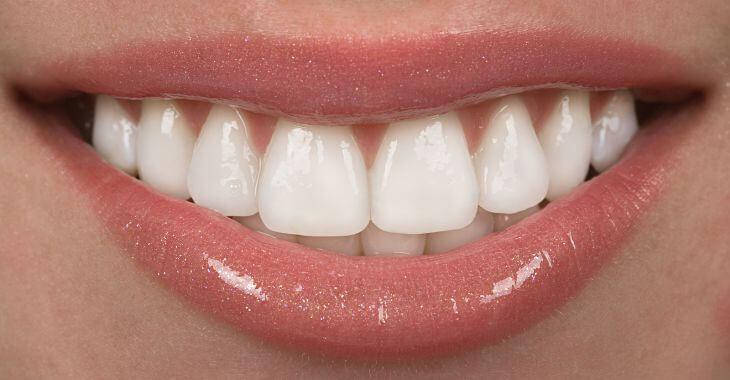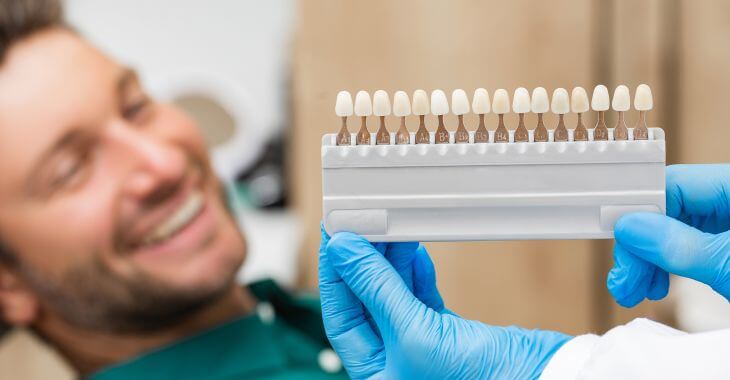The Four Periodontal Disease Stages

Periodontal disease is the most common cause of tooth loss. It is estimated that 50% or more of adults 30 years old or older have some level of gum disease. Periodontitis, or gum disease, does not happen overnight; there are prolonged periodontal disease stages that usually occur over many years before there is significant bone or tooth loss. Identifying periodontal disease in the early stages and receiving treatment can stop gum or bone damage. Here is what you need to know about the four periodontal disease stages.
What Is Periodontal Disease?
Periodontal disease is an infection of the gum tissue. Bacteria in the mouth can feed off food left on the teeth, creating plaque. If the plaque is not removed by brushing or flossing, it can harden into tartar. Over time, the gum tissue can become inflamed from the bacterial infection and irritation from the tartar. The gum tissue may recede and deteriorate, reducing support for the teeth. Eventually, in later stages of periodontal disease, bone and tooth loss can occur. Periodontal disease can also increase risk for other health issues.
Gingivitis: First of the Periodontal Disease Stages
Not all people with gingivitis will get periodontal disease, but all people with periodontitis had gingivitis in the early stages of periodontal disease. Gingivitis is an inflammation of the gingiva, or gum tissue, usually caused by plaque accumulation and poor oral hygiene. In most cases, gingivitis can be successfully treated and may be reversed. Symptoms of gingivitis can include:
- Red, swollen gums
- Bleeding gums when brushing
- Bad breath
- Tender, puffy gum tissue
When diagnosed in this first stage, gum disease is very treatable. Most patients can restore gum health with better oral hygiene and two or more dental cleanings by a dental hygienist a year. In some cases, deeper cleanings or prescription mouthwash may be used for treatment to stop the gum infection.
Early Periodontitis: Stage Two
The first level of periodontitis is the second overall stage of the gum disease progression. In early periodontitis, gingivitis has progressed into a more severe inflammation of the gum tissue. It will begin to recede away from the teeth due to irritation by the bacteria and tartar, creating gaps or pockets between the teeth and gums. To diagnose periodontitis, a dental hygienist will measure the pockets – early periodontitis usually has pocket depths of 4-5 millimeters.
Treatment for early periodontitis is similar to gingivitis, but may include more aggressive dental treatments. Improving home oral hygiene is imperative, but deep dental cleanings below the gum line may be required. This is called scaling and root planing, which involves scraping the tooth roots to remove tartar and plaque to stop gum irritation and infection.
Moderate Periodontitis: Stage Three
When treatment is not performed or successful in the first two stages of periodontal disease, the infection can cause deterioration of the gingiva and bone. Patients with moderate periodontitis will have bone loss and may experience severe infection in the gum tissue. Pus and bleeding may be present in the gingiva with severe recession away from the teeth. The teeth may become loose due to loss of support from deteriorating bone and gums.
Moderate periodontitis often requires surgical dental treatment. You cannot reverse damage in the later periodontal disease stages, but you can prevent further damage. Scaling and root planing is usually performed, and some patients may need surgical removal of diseased gum tissue. Both incision removal and laser removal can be used for diseased gum tissue. Treatment may also include use of antibiotics and other medications to control the infection.
Advanced Periodontitis: Stage Four
The last and most severe stage of periodontitis can result in significant bone loss in the jaw and tooth loss. Not only are patients with advanced periodontitis at risk for tooth loss, but they can also be at high risk for type 2 diabetes, stroke and cardiovascular disease. Tooth loss and bone reduction in the jaw can change your appearance, as well as your oral functions like chewing and speaking.

Even in the final stages of periodontal disease, there is hope for saving teeth and reducing bone loss. Oral surgery can remove damaged gum tissue to help it heal, and bone grafting can be used to stimulate bone growth in the jaw. If patients have lost teeth, treatments to control periodontitis can stop further loss and eventually, dental implants may be a possibility to restore a complete set of teeth. Treatment of the gum infection can also reduce risks for related health concerns.
Receiving a diagnosis and treatment in the early periodontal disease stages greatly improves your chance of stopping or even reversing damage to your gums. If you have symptoms of periodontal disease, you should schedule a dental checkup immediately. Routine dental cleanings and checkups paired with home oral hygiene can prevent gum disease, protecting your smile and your overall health.
The information provided on this website, including text, graphics, images, and other materials, is intended solely for informational purposes and should not be used as a substitute for professional medical advice, diagnosis, or treatment.



)